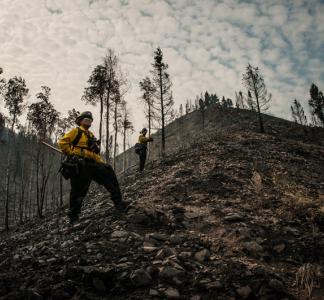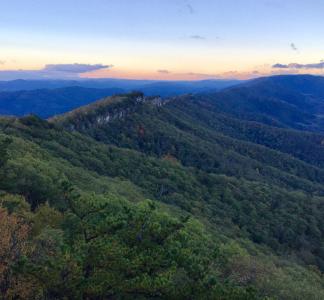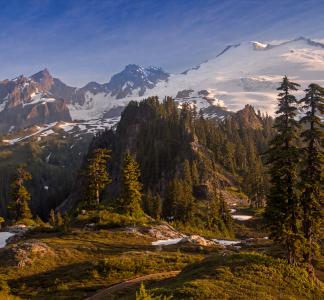3 reasons wildfires are getting more dangerous—and 3 ways to make things better
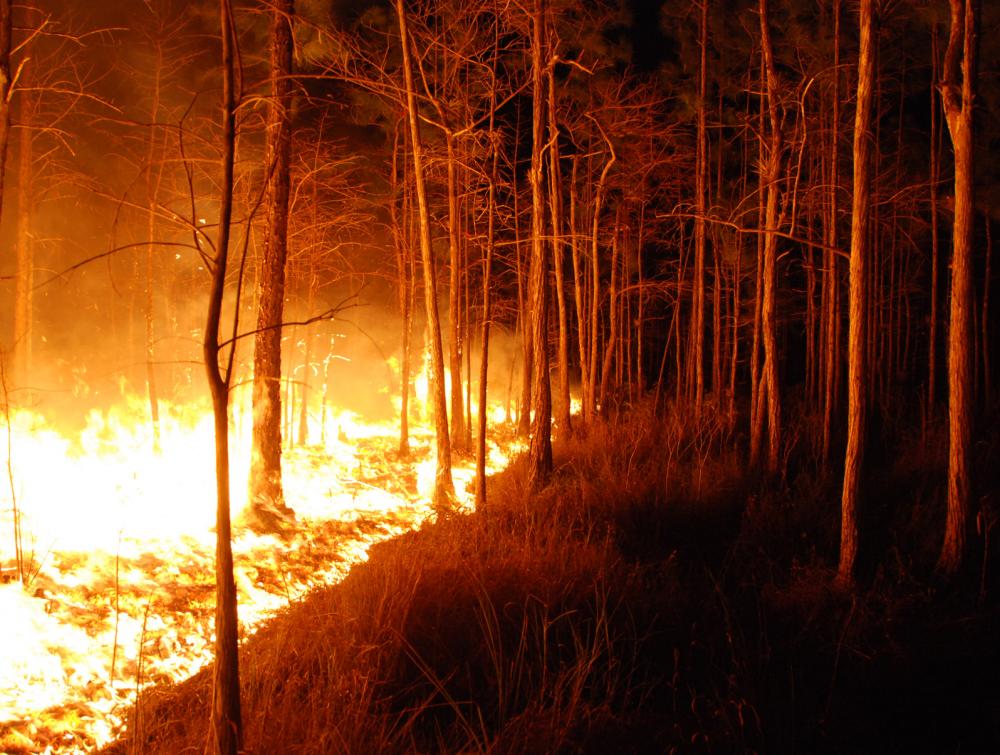
Wildfire burns in cypress prairie at Florida Panther National Wildlife Refuge, Florida
Josh O'Connor, USFWS
Bigger, more destructive fires demand new policies
In recent years, we’ve seen many tragic stories about wildfire tearing through Western communities, destroying homes and businesses and costing people their lives. These fires are becoming more intense and more likely to cause destruction. Here are a few reasons for these trends along with some strategies to reduce the risks and dangers.
1. Climate change is turning up the heat
You’re not imagining things: wildfires are getting bigger and more destructive. One of the main forces driving this trend is climate change, which has intensified summertime droughts; reduced the mountaintop snowpack, making fire seasons longer; and even increased lightning strikes that can trigger big fires in tinder-dry forests. Since the 1980s, researchers say, climate change has roughly doubled the area of wildfires in the western U.S.
These trends are not about to change on their own. Global temperatures have been hotter than the historical average for more than 40 consecutive years, and nine of the 10 warmest years on record have occurred since 2005. As the world heats up, some of the places already most vulnerable to extreme weather events are exposed to further danger (recall the climate change maxim “the wet get wetter, the dry get drier”).
Take California, the state most closely associated in the popular imagination with brutal wildfires. Fifteen of the 20 biggest fires in the state’s history have occurred since the year 2000, and under some data projections, big wildfires—covering more than 25,000 acres--could become 50 percent more frequent there by the year 2100.
HOW TO FIX IT:
Where to start? Deadlier wildfire is just one of a host of consequences arising from our unchecked use of fossil fuels like oil and coal. All that activity ends up dumping more and more heat-trapping greenhouse gases into the atmosphere, warming the planet and super-charging the conditions that give rise to extreme weather events. Priority no. 1 is taking decisive steps to reduce the use of fossil fuels and transition to renewable energy. The latest science says we have just 12 years to complete the overhaul necessary to limit warming to a manageable level and avoid the worst consequences, so there’s no time to waste. In the meantime, we need to invest in restoration work that helps make forest more resilient to climate change and heightened fire risk (see item no. 3 below).
2. Development is encroaching on forests and wildlands
As communities grow, more development is happening near forests, grasslands or other wild landscape. Experts call the areas where development mixes with natural lands the “Wildland-Urban Interface,” representing a swath of cities and towns that is at a much higher risk of destructive wildfire. This is the danger-zone where fires that might otherwise peter out on their own, on lands that used to be far away from people and property, have the potential to do major damage to communities.
The sheer remoteness of some of these communities in the Wildland-Urban Interface makes it harder to fight the fires that do pop up. For example, in 2007, San Diego County fire officials had a hard time pumping enough water to fight a fire in a remote town because the downed power line that sparked the blaze in the first place also knocked out the only easily accessible source of electricity. That same fire also closed off some of the few roads leading away from the area, making it tough to get people out of harm’s way.
HOW TO FIX IT:
Put simply, the areas where communities encroach on forest and grasslands are the places where fire is most likely to kill people and destroy homes and businesses. One of the most basic and important changes we could make would be to check runaway development in such areas and leave the wildest places more or less wild.
We should also direct more forest management resources to those towns that already exist in the Wildland-Urban Interface and encourage small-scale tweaks to reduce risk, such as using less combustible building materials, clearing vegetation that is too close to houses and strategically thinning some trees and brush.
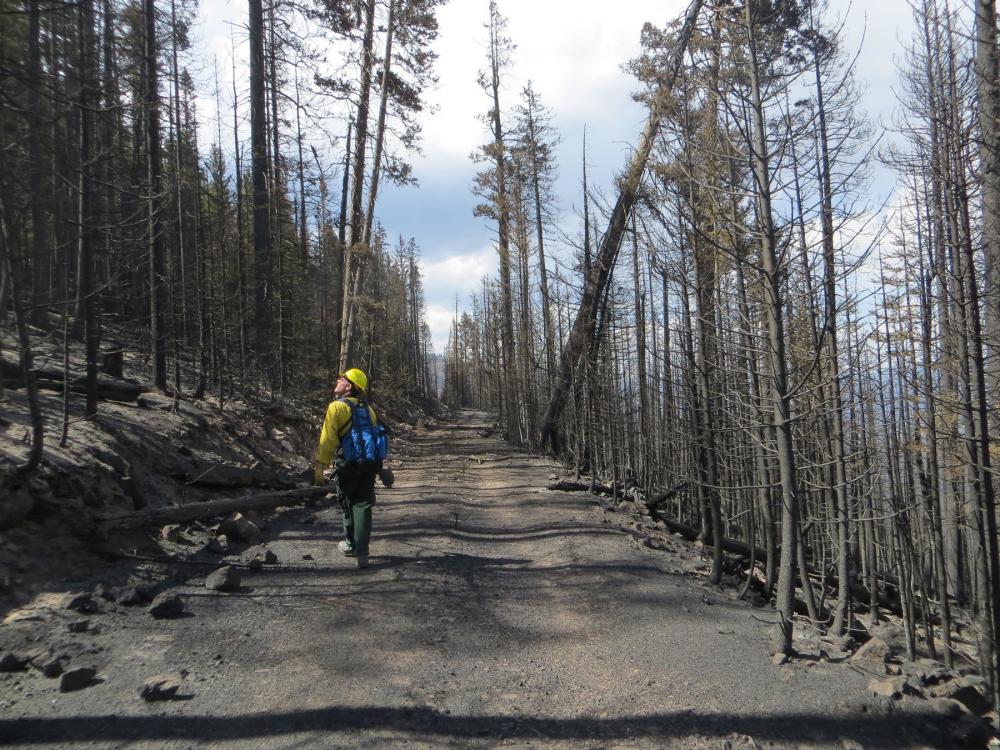
Forest Service team member examines burned areas after Thompson Ridge Fire in the Sante Fe National Forest, New Mexico
USFS, Flickr
3. We’re not managing forests properly
For many decades, federal agencies’ dominant strategy for dealing with wildfires was to prevent them or fight them whenever they popped up. It sounds pretty obvious, yet that course of action—known as “fire suppression”—is not always the best option. Some fires occur naturally in the wild, and scientists now know that these fires can play an important role in an ecosystem, allowing a robust and varied cycle of plant growth and helping make forests more resilient in the long run. But because of a long history of short-sighted fire suppression policies, some areas, where less-severe wildfires once cycled through the landscape every so often as part of a natural process of rebirth and renewal, are now clogged with plant material that ends up fueling hotter, more destructive blazes.
Logging interests and their political allies have sometimes claimed that cutting down more trees or removing burnt logs will reduce risk, ostensibly based on the simple calculation that it will leave less “fuel” for fires to consume. But this view is flawed, and it doesn’t fit with strategic forest management. In traditional logging, the largest, most fire-resistant trees are typically cut down, depleting exactly the parts of the forest that are key to lessening fire threats ( it’s better to remove smaller trees, but that activity, known as “thinning,” must be done carefully and with input from scientists and the public). Even dead (or seemingly dead) trees serve an important role, both by supporting biodiversity and serving as the ecological substrate for a more varied and fire-resistant forest; removing them can be very dangerous.
HOW TO FIX IT:
Experts say that we need to shift our mindset when it comes to dealing with wildfires. Rather than trying to stopthem all—an impossible and self-defeating task—we should be managingfire risk, taking action to protect people and minimize damage to property while incorporating the knowledge that some fire is normal, healthy and necessary.
Among other things, that means allowing some fires to run their course and burn through sections of forest. While the immediate aftermath might look shocking, these flame-scarred patches can actually act as “fire breaks”—essentially speed bumps that will prevent future fires from becoming huge, runaway disasters. Accepting that fire is part of the routine will help inoculate the most sensitive areas from true disasters.
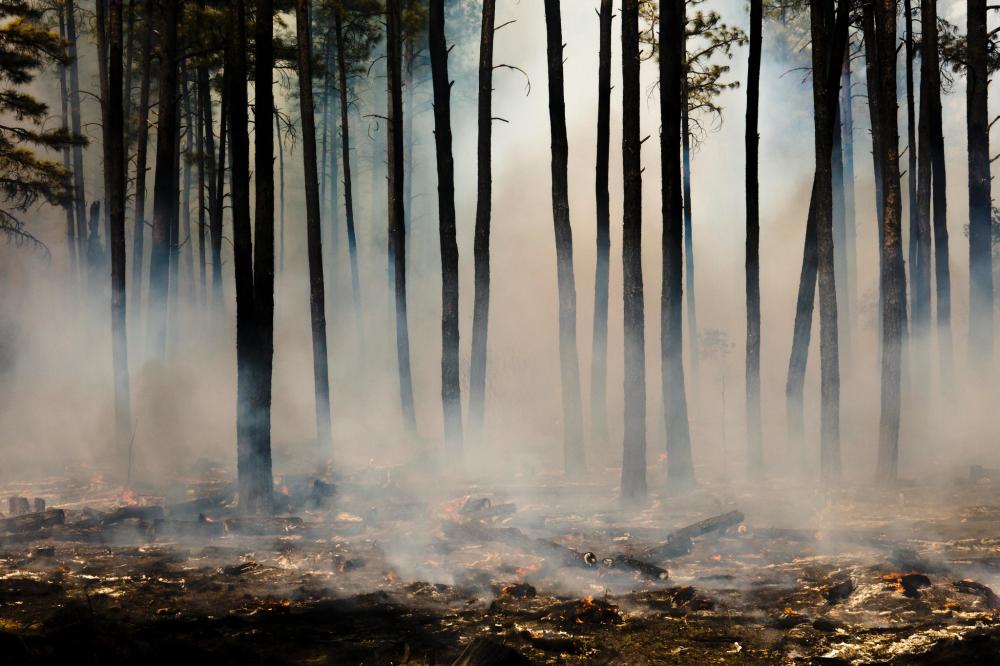
Aftermath of the 2016 Cedar Fire in Whiteriver, Arizona
USFS, Flickr
